 |
The motorcycle tyres
|
It has more grip...it has less grip on the wet road....they are soft tires, medium, are not they hard tires?.......these are terms frequently used to define the behavior and the quality of the tires.
 |
The motorcycle tyres
|

What's the tire task? The answer is easy, the tire has to perform two tasks:
- allowing the transfer of drive force or brake force on the ground;
- generating the necessary lateral forces to maintain the motorcycle equilibrium in the curve or along a curvilinear path as for example those generated to avoid an obstacle, to carry out a line change or to run on a S shape curve.
Right now we try to understand how the lateral force is generated and how much it has to be when the motorcycle is running on steady turning condition with constant speed (stable condition) and which parameter the force depends from .
It is easy to understand that lateral force depends on normal vertical load applied on the wheel. High vertical load makes high lateral force. Understanding the dependence of lateral force upon the camber angle and tire sideslip (tire side-slip expressed by side-slip angle which will be defined later) is less intuitive.
The lateral force also depends on two more parameters which the bikers know very well: the tire pressure and the tire temperature in the work condition.
First we consider the camber angle effect. In vertical position the tire imprint is elliptical and symmetric; the tire imprint showed in figure 1 is painted with grey tones whose intensity is proportional to the pressure between the tire and the ground.
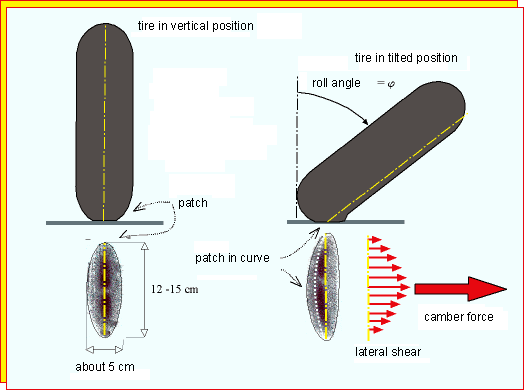
Figure 1. Vertical and tilted position tire imprints. The gray tone intensity is proportional to the pressure between the tire and the ground.
As you can observe in figure 1, when the wheel is tilted, the rubber particle that through the imprint doesn't follow the path that it would follow if there wasn't the contact between tire and ground. Because of there is contact with the ground the particle has to follow a different path, therefore the ground contact cause a deformation of tire carcass; this deformation generates a lateral force that increase when the camber angle increase.
Understanding better that phenomenon it is helpful to think about a shape-retaining tire, as if it was metallic; in that case the contact patch becomes like a point, there is not carcass deformation, hence the force due to the camber is null.
The camber force depends on shape and dimension of contact patch.
Contact patch depends on tire's geometric characteristics (rolling radius and cross section radius) and carcass lateral/radial stiffness.

Figure 2. Lateral and radial stiffness depend on pneumatic kind (front or rear), geometry, carcass constructive characteristics (radial, cross), pressure and normal load.
Right now we consider the lateral slip effect that is the side-slip angle
The side-slip angle is the angle between the forward direction and the central plane of the wheel. The contact patch is asymmetrical when the there is lateral slip. In the first part of contact patch the rubber particles tend to follow speed direction but, since the speed direction doesn't coincide to the wheel plane, the particles located inside contact patch are deformed with respect to tire carcass.
This is the contact patch part with adherence. When the deformation is al little more, the elastic recall forces due to the deformation of the rubber are greater then the adherence force so the particles start to slider. This is the contact patch part with slide. The integral of contact patch pressure give the lateral force due to the side-slip.

Figure 3. Side-slip force origin. The lateral pressure resultant is the lateral force due to the side-slip angle.
We saw the lateral force depends both roll angle and lateral slide of the tire; we expressed the tire lateral slip by means of side-slip angle.
Usually the lateral force is plotted against side-slip angle for various roll angles as represented in figure 4 for a race front tire.
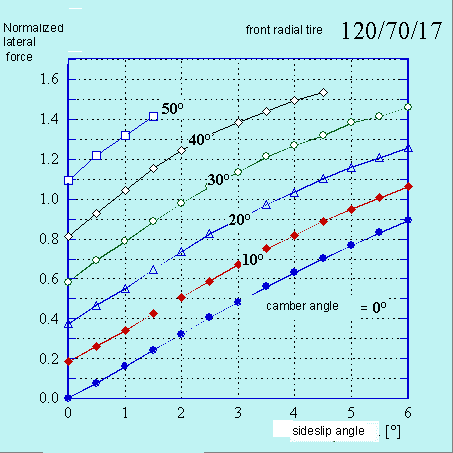
Figure 4. Lateral force against side-slip angle for various roll angles.
This kind of representation is used in the car field because the roll angle is very small and the tires make the required lateral forces only by the lateral slip. Otherwise the motorcycle tires work first by the roll and second by lateral slip, at least for the production of the lateral force. That's why for the motorcycle tires is better to represent the lateral force against roll angle for various side-slip angles as showed in the figure 5.
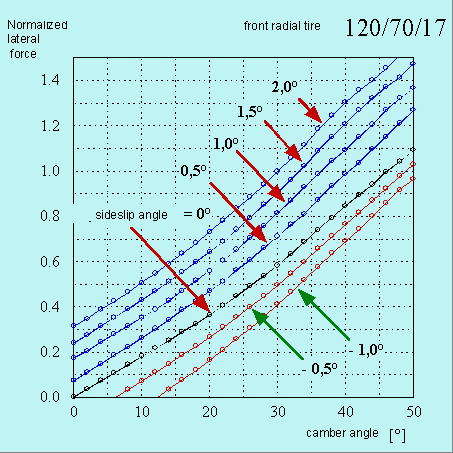
Figure 5. Lateral force against roll angle for various side-slip angles.
The lateral force can be expressed analytically by means of a linear function of roll angle and side-slip angle, thinking the force as sum of two independent components: the roll component and the side-slip component.
Forcelateral = Kroll * j + K side-slip * l
The K constants have a geometric meaning too; they represent the tangents of the curves respectively the normalized lateral force against roll angle with side-slip angle null and the lateral force against side-slip angle with roll angle null.
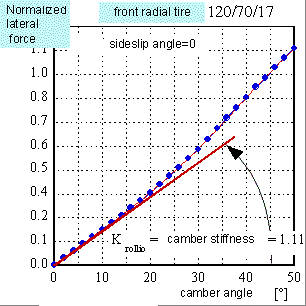
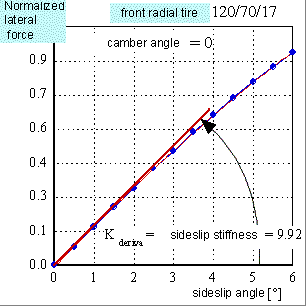
Figure 6.Roll and side-slip stiffness geometric meaning. Stiffness are expressed in 1/rad.
To understand how much is the lateral force we consider a motorcycle running on steady turning condition with constant speed.
Neglecting the gyroscopic effects generated by the wheels during steady turning condition and the fact that cross-section of tires is considerable (the tire cross diameter can be greater than 100 mm for rear tires) the lateral force required to allow the equilibrium is obtained by multiplication of the vertical load by the tangent of the roll angle.
Forcelateral =Loadvertical * tang j
Using his hypothesis is like to consider a virtual motorcycle with wheels having a very small inertia moment (magnesium or carbon fiber wheels) with a very small cross section like the race bicycle tubular wheels.
For instance when the roll angle is equal to 45° the lateral force is equal exactly to the vertical load. The equilibrium condition is represented in figure 6 that shows that the centrifugal force is equilibrated exactly by the sum of the two lateral forces generated by the two tires.
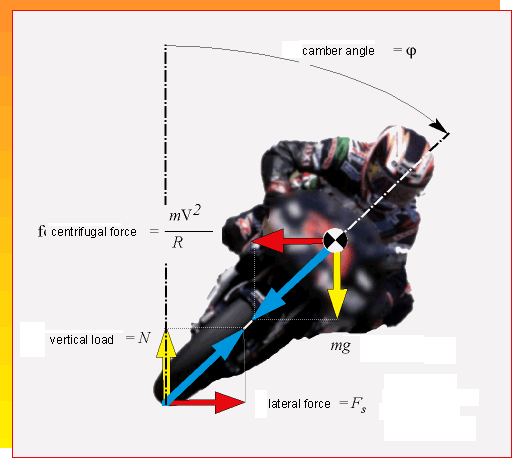
Figure 7. Motorcycle equilibrium in the curve. R indicate the curvature radius of the curve, m the mass of the vehicle with driver and V the forward speed.
Figure 8 shows lateral forces against roll angle for two tires, front and rear, related to the respective vertical loads.
The figure shows also the trend of the following function:
tang j= Forcelateral / Loadvertical = V2/ (g*R )
that represents the equilibrium condition in the curve.
The lateral force generated by roll, related to the vertical load, can be greater or smaller than the force required in the equilibrium condition represented by the value of the tangent of the roll angle. In the first case, with insufficient roll force, you need a lateral slip that is a positive side-slip angle that makes the part of the force missing to the equilibrium; in the second case, instead, the side-slip angle has to be negative to decrease the lateral force due to the only roll that is greater than the force in the equilibrium condition.
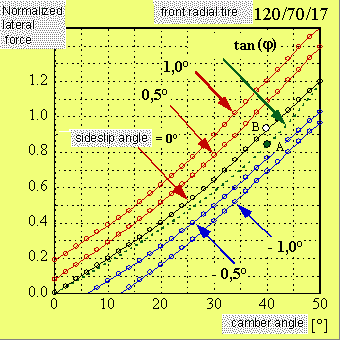
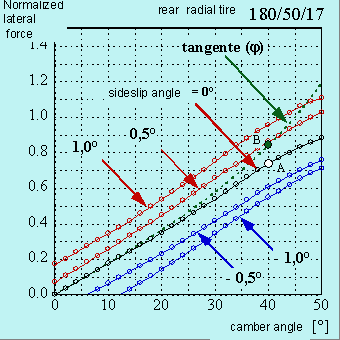
Figure 8. Example of front and rear lateral forces versus roll angle. The dotted lines represented the lateral force required for the equilibrium in the curve.
We consider the tire whose characteristics are represented in figure 7 and hypothesize the bike is running in the curve with roll angle 40°.
For the rear tire the roll force is insufficient to make the equilibrium. In fact the lateral force with side-slip angle null is about 0.73 (point A) while the required force is 0.85. The rear tire therefore will slip laterally out side and the side-slip angle will be such to increase the lateral force up to the value for the equilibrium (point B). In the equilibrium condition for the front tire case you will have instead a negative side-slip angle because, for roll angle equal to the 40° degrees, the lateral force only due to the roll (point B) is greater then the force required for the equilibrium (point A).
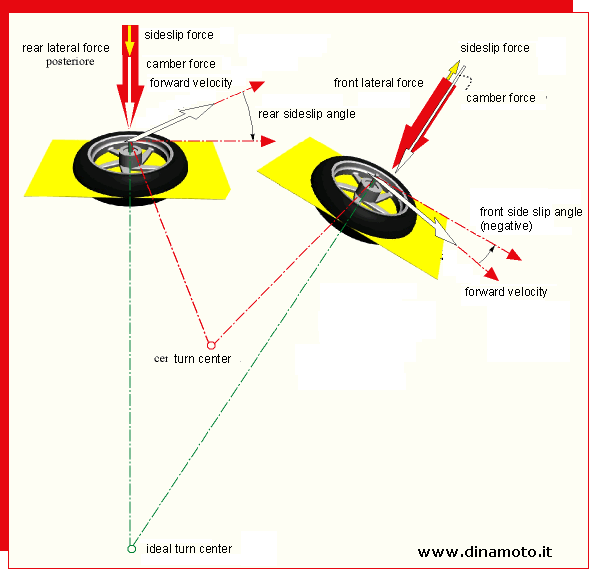
Figure 9.Top view of a motorcycle in the curve.
It would be possible to use a poor quality front tire and a good quality rear tire. In substance it would be the case of large front tire side-slip and lightly negative or null rear tire side-slip. In this case the motorcycle behavior would be much under steering. The under steering motorcycle behavior could be dangerous because, if it would will be necessary to force over on the bend, it would be required to the front tire a larger lateral force that is a larger side-slip angle.
What would happen if the tire would not able to generate this larger force? The front tire would slide and the fall would be sure. The tire problem is not all here.
For instance, how do temperature and pressure influence roll and side-slip force?
The forces depend on vertical load in proportional or not proportional mode?
How much is the lateral force when it is required a braking or driving longitudinal force?
Why changing the tires you feel a different driving even if you feel a grip feeling?
What is the correlation between bike's handling and tire's characteristics?.
The questions are very many; we will give scientific answers on the next articles. In the meanwhile we will start to asked to the tire companies the values of the forces generated for various roll angle, side-slip angle, temperature, pressure.. Maybe is better to talk with numbers: soft rubber, hard, more grip..they only are void words.